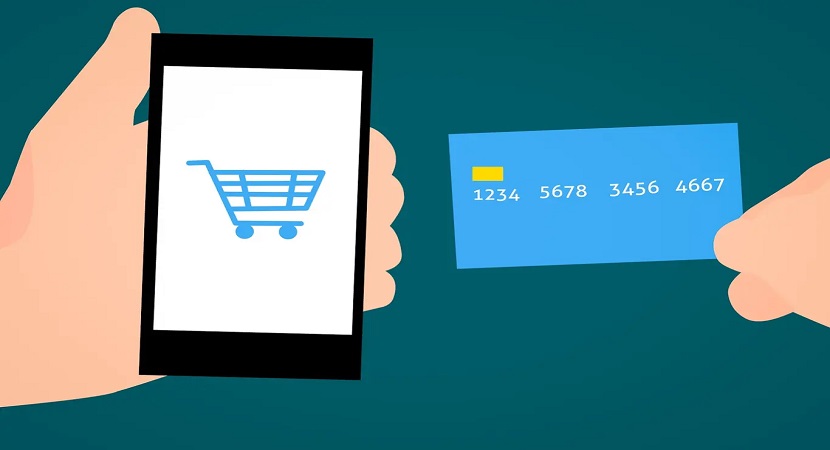In today’s competitive world of e-Commerce, Mobile commerce has established itself as the leader. Since the current bulk of consumers use their mobile gadgets for browsing and shopping, online stores have to make adjustments in order to optimize them with regard to productivity. This article will discuss the newest trends in mobile commerce and how you can optimize your online shop to be attractive for users who browse on their smartphones.
- Definition of Mobile Commerce (mCommerce): Mobile commerce or mCommerce is the process of purchasing and selling goods through mobile devices, including smartphones and tablets.
- Importance of Optimizing for Mobile Users: As the mobile devices become more prevalent, optimizing your online store for a smooth shopping experience on mobile phones is key to reaching many other new customers.
- Overview of Current Mobile Commerce Trends: As mobile commerce continues to change rapidly, it is important for companies in the industry to keep up with new trends so that they may remain competitive.
Mobile-First Design
A. Importance of Responsive Design
Responsive design is no longer a luxury in the age of smartphones and tablets; it’s a necessity. Make sure that your online store harmonizes with different screen sizes, delivering quality viewing and engagement to the users.
- Ensures optimal viewing across various devices: Responsive design dynamically adjusts your website’ layout to fit various screen dimensions, providing a seamless and comfortable interface for smartphones and tablets.
- Enhances user experience on smartphones and tablets: However, by focusing on responsive design you improve the user experience with navigation and interface smoother on mobile devices.

B. Considerations for User Experience (UX) on Mobile Devices
Focus on the mobile user experience by reducing navigation, shortening checkout processes, and reducing page loads. Positive mobile UX leads users to discover and buy with convenience.
- Simplifies navigation for mobile users: The user journey is simplified when navigation on mobile devices becomes less complex, thereby worth of friction and enhancing satisfaction.
- Streamlines checkout processes for a positive UX: Mobile users should be the focus of optimizing checkout processes, which is especially important because this directly influences conversion ratings. The customer satisfaction is affected by a smooth, easy to use checkout process.
C. User-friendly navigation and interface design on mobile devices
Mobile-friendly design is dependent on features such as intuitive navigation and user friendly interfaces. Design touch-friendly buttons, simple navigation, and clear calls to action in order to provide a better UX.
- Implements touch-friendly buttons for ease of use: Touch-sensitive interface elements correspond to the tactile nature of mobile devices and allow users comfortable interaction with your site.
- Creates clear calls-to-action to enhance user interaction: The properly defined calls-to-action leads users through the purchasing process, resulting in more engagement and conversion rates.
Progressive Web Apps (PWAs)
Definition and advantages of PWAs.
PWAs are changing the way we interact with mobile devices by fusing together elements of websites and native apps. Discuss the advantages of PWAs, including speedy load times; offline features and improved interaction.
- Combines features of websites and native apps: PWAs present the best of both worlds blending fast native application performance with easy access via a web browser.
- Improves engagement with faster load times: Faster page load speed improves the quality of user experience and engagement, thus lowering bounce rates.
B. Case Studies of Effective PWA Implementations in e-Commerce
Learn how the major eCommerce brands have embraced PWAs and implemented effective strategies to improve user experiences as well as increase conversion rates. This kind of technology can be shown to have worked through case studies and success stories.
- Demonstrates real-world success stories: Showcasing effective PWA implementations within the eCommerce setting demonstrates how it can help and prompt usage.
- Highlights conversion rate improvements with PWAs: The talk of areas where we can see improvements in conversion rates highlights the practical effect a PWA may have on your money-making.
C. The Impact of PWAs on User Engagement and Conversion Rates
Consider how PWAs improve user engagement and lead to higher conversion rates. PWAs, from push notifications to smooth user experiences benefit both businesses and consumers.
- Utilizes push notifications to enhance user engagement: Push notifications help to retain customers and make their experience easier, increasing the chance of future visits or purchases.
- Offers offline functionality for a seamless user experience: In the case of offline functionality, users can visit your site regardless of unstable internet connection.
Mobile Payment Solutions
A. Mobile payments trends summary
The landscape of mobile payments is changing fast. Discover current trends such as popularization of mobile wallets and contactless payments, which can make checkout easier for your customers.
Discusses the rise of mobile wallets and contactless payments: Mobile wallets and contactless payments are gaining a lot of popularity because they make purchasing much easier, faster.
Examines security measures for mobile transactions: Mobile transactions require the highest level of security. Analysis of the current security precautions promotes trust among users.
B. Incorporating Mobile Wallets and Contactless Payments
Discuss the process of adding mobile wallet alternatives and touchless payment tools to your eCommerce website. Strengthen the security of mobile transactions to gain trust among users.
- Integrates mobile wallet options for convenience: By providing various mobile wallet options, you can meet the differing needs of your customer base.
- Enhances security measures for contactless payments: Increasing the security protocols protect customer data to promote trust in your payment systems.
C. Improvement of Security in Mobile Transactions
Mobile commerce heavily depends on security. Discover the most up-to-date security protocols and solutions that protect confidential info when doing mobile transactions, creating a safe shopping climate.
- Explores the latest security measures and technologies: Adapting to security trends is key in protecting your customers and the company itself.
- Builds trust among users making mobile transactions: Open communication about security practices helps to cultivate trust and makes users comfortable in making mobile money transactions.
Augmented Reality (AR) and Virtual Reality (VR)
A. Implementation of AR for Virtual Try-Ons and Product Visualization
Find out how AR is revolutionizing the online shopping industry, enabling users to see products in a real environment. Investigate the possible uses of AR for virtual try-ons to limit their influence on consumer decision making.
- Implements AR for virtual try-ons: Virtual product tryouts for customers improve the online shopping experience.
- Enhances product visualization in real-world settings: AR helps to enhance product visualization by allowing customers an actual preview of the products and how they can fit into their lives.
B. The VR Shopping Experiences and Their Outcomes
Dive into the fascinating environment of Virtual Reality (VR) and how it is used for eCommerce. Insight: Learn how VR shopping experiences can distinguish your online store from others and offer customers a distinctive way for interacting with the products.
- Explores the immersive world of VR shopping: Customers can experience your products in a novel and captivating manner using virtual reality, which revolutionizes the shopping process.
- Demonstrates the impact on consumer decision-making: A right understanding of the impact of VR on making decisions assists in preparing appropriately to satisfy customer demands.
C. Case studies of Brands Using AR/VR in mCommerce
Conduct case studies on brands that have been able to effectively deploy AR and VR in their m-commerce strategy. Real-life scenarios demonstrate the wide range of use cases and advantages provided by these technologies.
- Showcase case studies of successful AR/VR implementations: Examples of real applications where the AR/VR technologies have been successfully implemented can serve as sources of inspiration and insight into how such technologies may be used in solving specific problems.
- Highlights diverse applications and benefits of these technologies: However, virtual try-ons are not the only applications of AR and VR in mCommerce; they demonstrate much wider applicability of these technologies.
Voice Commerce
1. Voice search is on the rise in eCommerce
As more users take up voice-activated search, the rise of voice commerce continues to gain steam. Analyze the development of voice search and its negative effects for eCommerce such as modifications in users’ behavior and searching type.
- Explores the increasing use of voice-activated search: Voice search is on the rise, changing how users and customers find as well as interact with products.
- Examines changes in user behavior and search patterns: The change in behavior and the patterns of search assist businesses by ensuring that they adapt their strategies to suit changing customer needs.
B. Introduction of Voice-Activated Shopping Functions
Find out how to develop voice-activated shopping capabilities for users who want this hands free approach. Understand the implications of integrating voice commerce into your mobile strategy.
- Provides practical steps for implementing voice-activated features: Businesses can respond to the emergence of voice commerce by introducing into their mobile applications features powered by speech recognition so that customers could make purchases through his/her voice.
- Discusses challenges and opportunities in voice commerce: The identification of challenges and opportunities in voice commerce provides a way for businesses to help direct the trend’s development appropriately.
C. Voice commerce as a way to increase accessibility and convenience
Analyze the accessibility and convenience that voice commerce provides to users, especially for individuals with disabilities. Try to find out ways of implementing an inclusive mobile purchase through voice technology.
- Explores how voice commerce enhances accessibility: Voice commerce increases the convenience of shopping online, especially for those with mobility problems or who favor voice interaction.
- Provides strategies for creating an inclusive mobile shopping experience: Through including strategies, voice commerce benefits all users and therefore develops a wider range of customers.
Mobile SEO Strategies
A. eCommerce Mobile SEO Importance
Mobile SEO helps drive organic traffic into your e-commerce site. Understand why mobile search optimization is vital and how it impacts your site’s ranking in the SERP.
- Discusses the significance of mobile SEO: Mobile SEO is indispensable for maximizing website visibility on search engines and attracting organic visits to your mobile version.
- Explores its impact on website visibility in search engines: It is also worth noting that a mobile-friendly website is likely to achieve high search engine results which increases the chances of attracting organic traffic.
B. Mobile Search Optimizing Product Pages
Discuss the ideal practices for mobile optimization of product pages. From mobile-friendly content to keyword research, these tactics will ensure that your online store appears high in the search results page when a user searches using a mobile device.
- Explores best practices for optimizing product pages: Product pages have to be optimized for mobile search so that the customers can easily locate and navigate your product portfolio.
- Provides tips for mobile-friendly content creation: Writing mobile friendly content enhances the overall website experience to back up your Mobile SEO
C. Mobile-friendly content and SEO best practices
Learn about content’s influence on mobile SEO and discover the key principles in creating mobile-friendly content. Mobile optimization is critical at every stage of the process, from concise product descriptions to mobile-optimized images.
- Discusses the role of content in mobile SEO: Mobile SEO depends significantly on content, providing information about how the search engines rank and display your mobile site.
- Provides best practices for creating mobile-friendly content: By following best practices to create mobile-friendly content, you can make your mobile site more readable and interesting.
Push Notifications and Personalization
The use of push notifications for engagement purposes is a matter that can be leveraged.
Learn how push notifications can help keep your audience engaged with them. Discover the best push notification practices that help to promote new products, inform users of discounts, and win over more customers.
- Demonstrates the power of push notifications: Although notifications can be pushed reminders about deals, new products and what may interest the subscribers.
- Explores strategic use for promoting products and notifying users: Using push notifications wisely, businesses can advertise products efficiently and keep people informed of important information accordingly.
B personalized recommendations for mobile users
The need for personalized recommendations in mobile commerce should be investigated. Learn how data-driven personalization can improve the shopping experience by giving users appropriate product recommendations.
- Explores the importance of personalized recommendations: Custom recommendations improve the level of satisfaction among customers, making them more likely to buy products.
- Discusses the role of data-driven personalization: Customer data underpins the personalization of advice, meaning that individual shopping experiences are based on customer-specific preferences.
C. The Balancing Act of Personalization and User Privacy
With advancing personalization, the right balance between user privacy is vital. Know how to add personalized features that do not compromise on user privacy.
- Discusses the importance of user privacy in personalization: Respecting user privacy is essential for building trust. Businesses have to come up with the right balance between personalized efforts and user privacy.
- Explores strategies for respecting user data and privacy concerns: The provision of clear data practices and enabling opt-in choices aids companies in respecting user privacy without sacrificing customized experiences.
Cross-Channel Consistency
A. Consistent Branding Across Devices
Consistency in branding across all devices is the surest way to earn trust and create awareness. Investigate ways of maintaining consistency in brand experience across desktop and mobile devices when your online store is accessed.
- Highlights the importance of consistent branding: Branding the appearance of customer devices in a consistent manner ensures that customers come to recognise your brand.
- Discusses strategies for maintaining brand identity across devices: Design and message consistency ensures brand coherence across channels.
B. Frictionless Desktop-Mobile Switch
Enable a smooth transition for users switching between desktop and mobile devices. Learn the complexities of cross-channel consistency, and develop plans to build a fluid user experience.
- Explores strategies for a seamless transition between devices: The smooth transition between desktop and mobile devices improves the customer journey, thus minimizing its point of friction.
- Discusses challenges and opportunities in cross-channel consistency: The identification and overcoming of challenges in cross-channel consistency makes it possible for businesses to capitalize on opportunities that would provide them with consistent brand messaging.
C. Cross-Channel Marketing: Strategies
Find successful cross-channel marketing solutions to keep your brand message intact throughout the channels. Investigate how to incorporate mobile commerce into your integrated marketing strategy, including email campaigns and social media.
- Discusses effective cross-channel marketing strategies: Mobile Commerce, therefore can be effectively integrated as a part of the overall marketing strategy to ensure an harmonized and well-coordinated course through multiple channels.
- Explores integration of mobile commerce into overall marketing strategy: A coordination of mobile commerce with larger marketing campaigns will ensure that the promotional efforts are optimally effective and far-reaching.
Analytics and User Insights
A. Importance of Mobile Analytics
The analytics aids in understanding the user behavior and making decisions. Investigate mobile analytics and how the data insights could be used to steer your optimization strategy for m-commerce.
- Discusses the crucial role of mobile analytics: Mobile analytics offer useful information about user habits that allow companies to make responsible conclusions.
- Explores how data insights guide optimization efforts: Capitalizing on data insights enables businesses to pinpoint areas that need improvement and refine their mobile commerce strategies.
B. User Behaviors on Mobile Devices
Plunge mobile user behavior analytics to know how users use your online store. Know classic user routes, detect weak points, and shape the mobile shopping experience with data.
- Dives into mobile user behavior analytics: Interacting with the mobile site users makes it possible to improve and customize user experience by eliminating pain points.
- Identifies common user pathways and potential pain points: Analyzing user pathways enables tracking of common routes and possible friction points allowing for concentrated optimizations.
C. Data-Driven Decision Making for Optimization
Find out how to use data that will assist you in reaching informed decisions regarding mobile commerce strategy optimization. Learn methods for improving the mobile shopping experience based on user feedback and behavior through A/B testing or surveys.
- Explores leveraging data for informed decision-making: Data-driven decision making is something that involves analytics as the basis of strategy with ongoing improvement.
- Discusses methods for continuous improvement based on user feedback: When the feedback from the user is combined with analytics, this provides relevant insights into ongoing optimization for a user-centric mobile commerce experience.
Conclusion
In the dynamic realm of mobile commerce, the role of an eCommerce Development Company is paramount. Crafting a seamless mobile experience involves strategic implementation of responsive design, innovative technologies such as PWAs and AR/VR, and ensuring secure mobile payment solutions. The company’s expertise extends to optimizing mobile SEO, personalizing user interactions, and maintaining cross-channel consistency for a recognizable brand identity. In a landscape where adaptability is key, this eCommerce Development Company stands as a reliable guide, leveraging data-driven insights to continually refine strategies and propel businesses toward sustained success in the ever-evolving world of online commerce.
Author Bio:
Bimal Patel is the CEO and Founder of Myra Technolabs, a steadily growing Top Web and Mobile Development company. It works with the single motto of helping clients build successful businesses in their domain. He believes in creating happy clients and for the same, he invests his full potential in every client’s work.





Leave a Reply